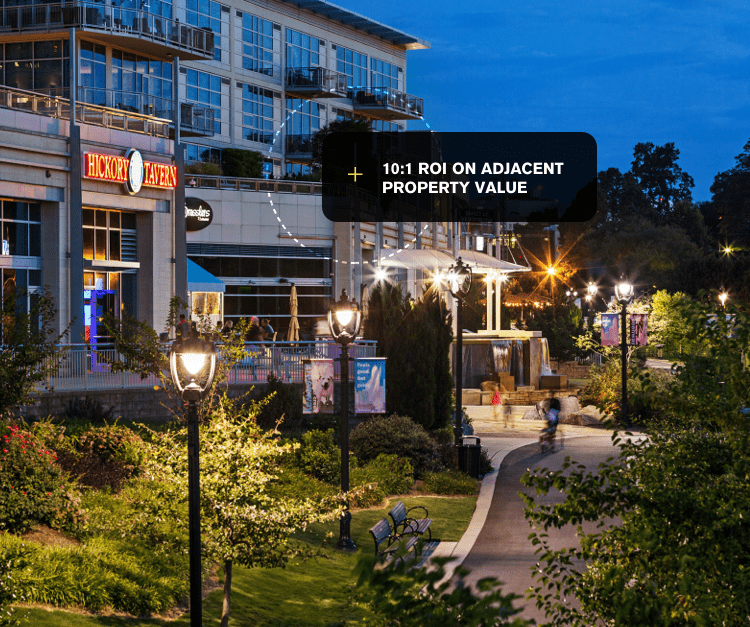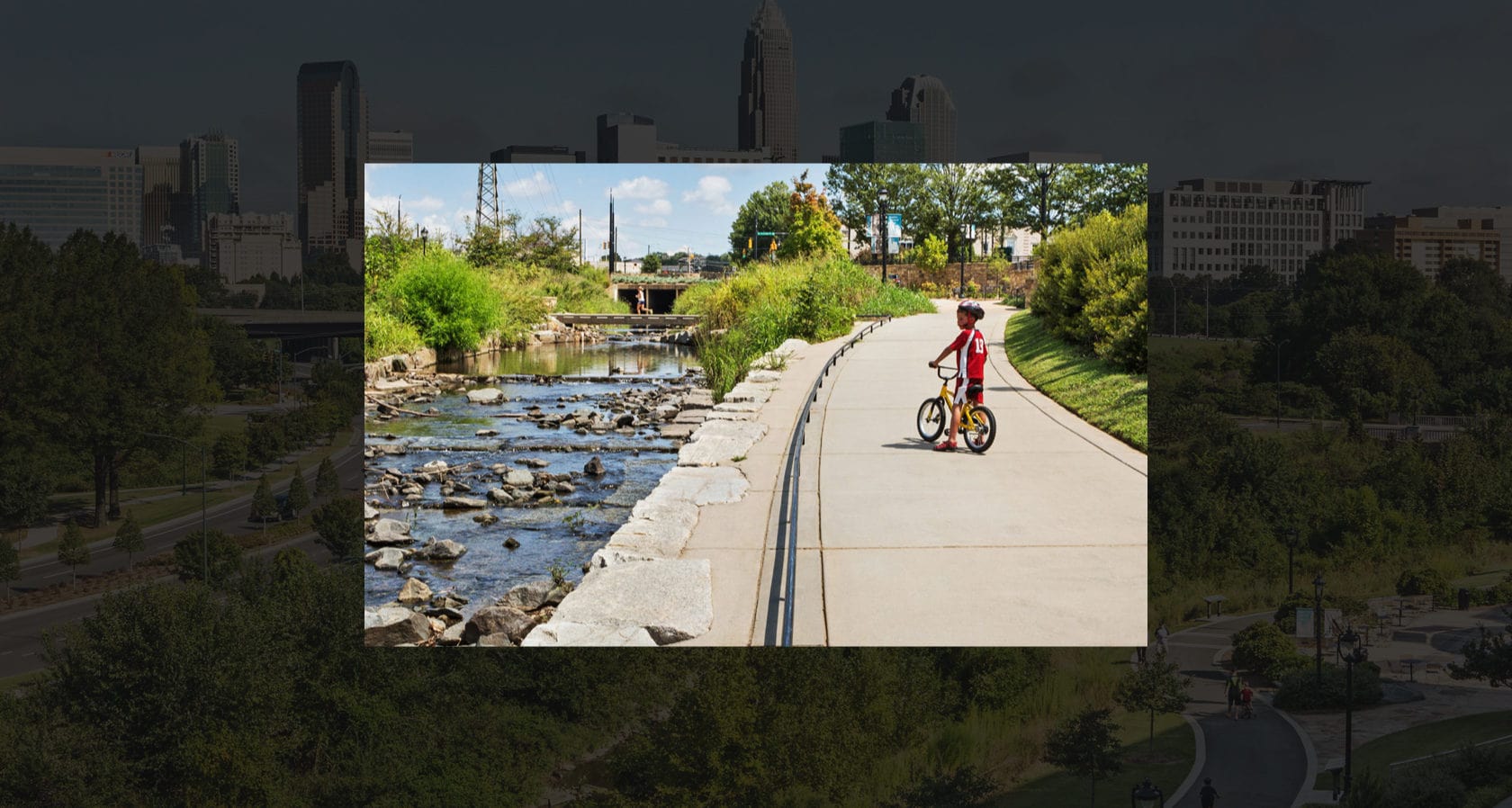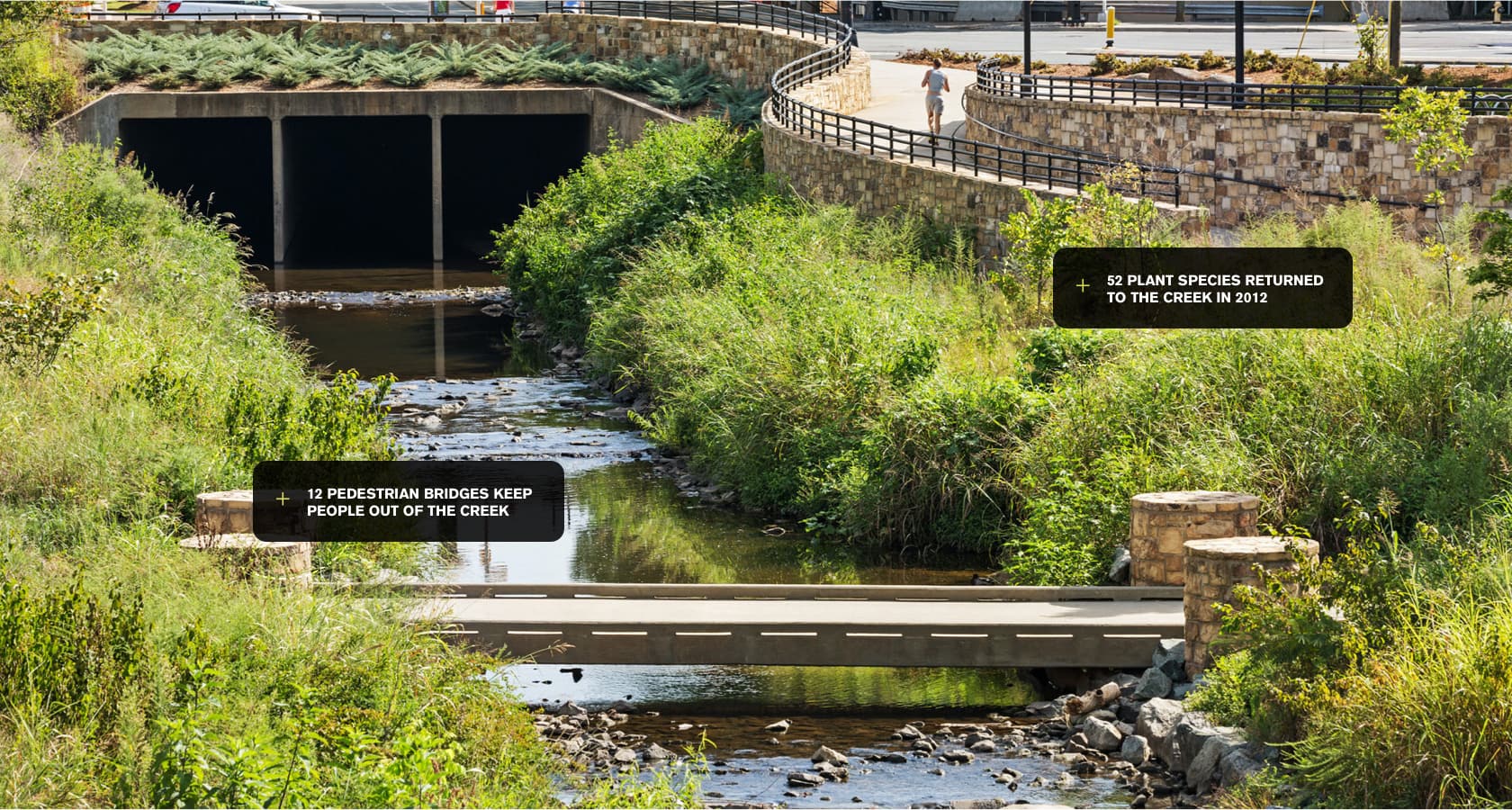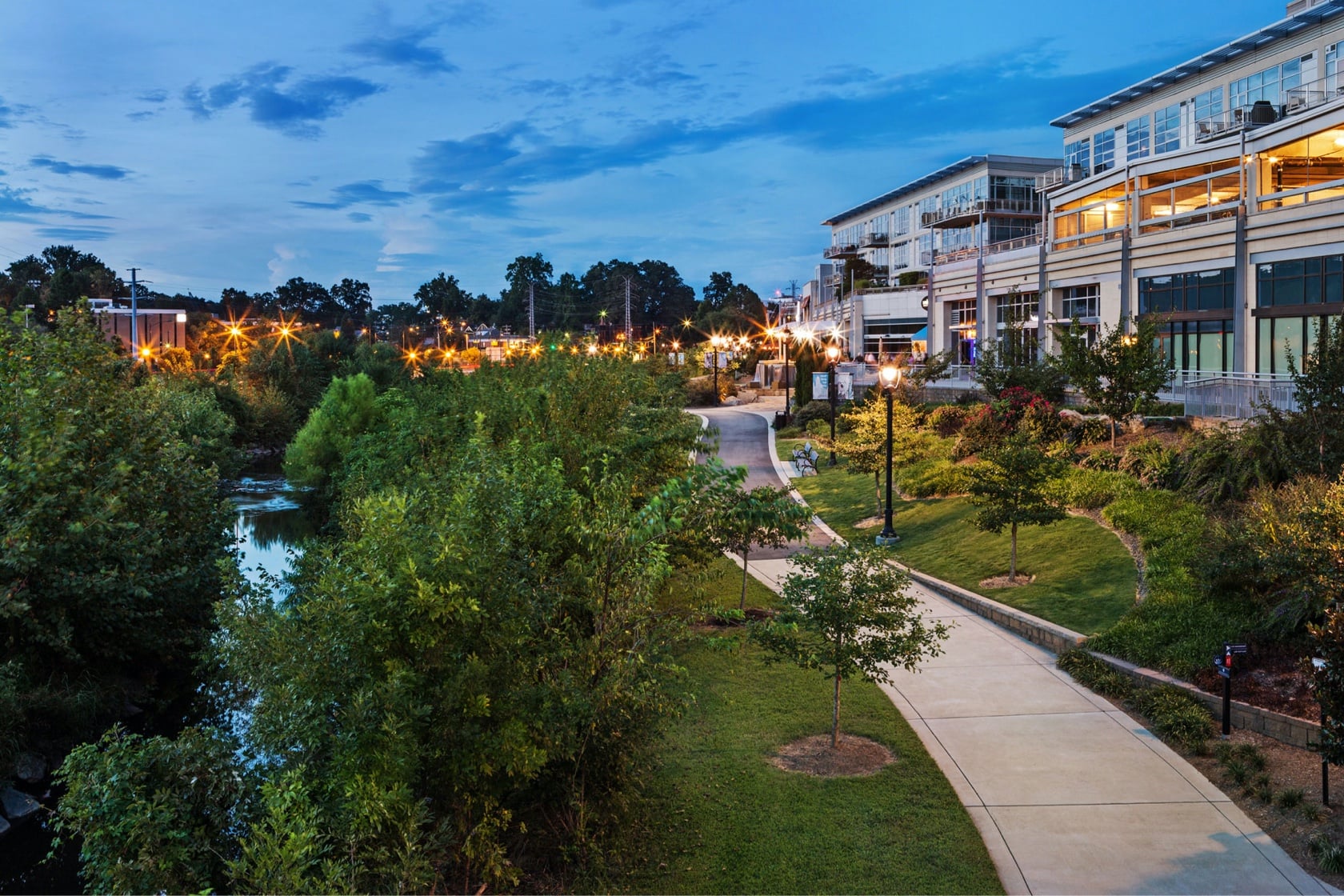Charlotte, NC
Little Sugar Creek Greenway
Return to Nature Yields Returns in the Community
status
Completed 2012
client
Mecklenburg County Park and Recreation Department
expertise
Public Infrastructure, Public Realm + Open Space
services
Landscape Architecture Civil Engineering Master Planning Land Planning


HIDDEN HISTORY
A Look at the Storied Past of Little Sugar Creek Greenway and its Rise in Community Value
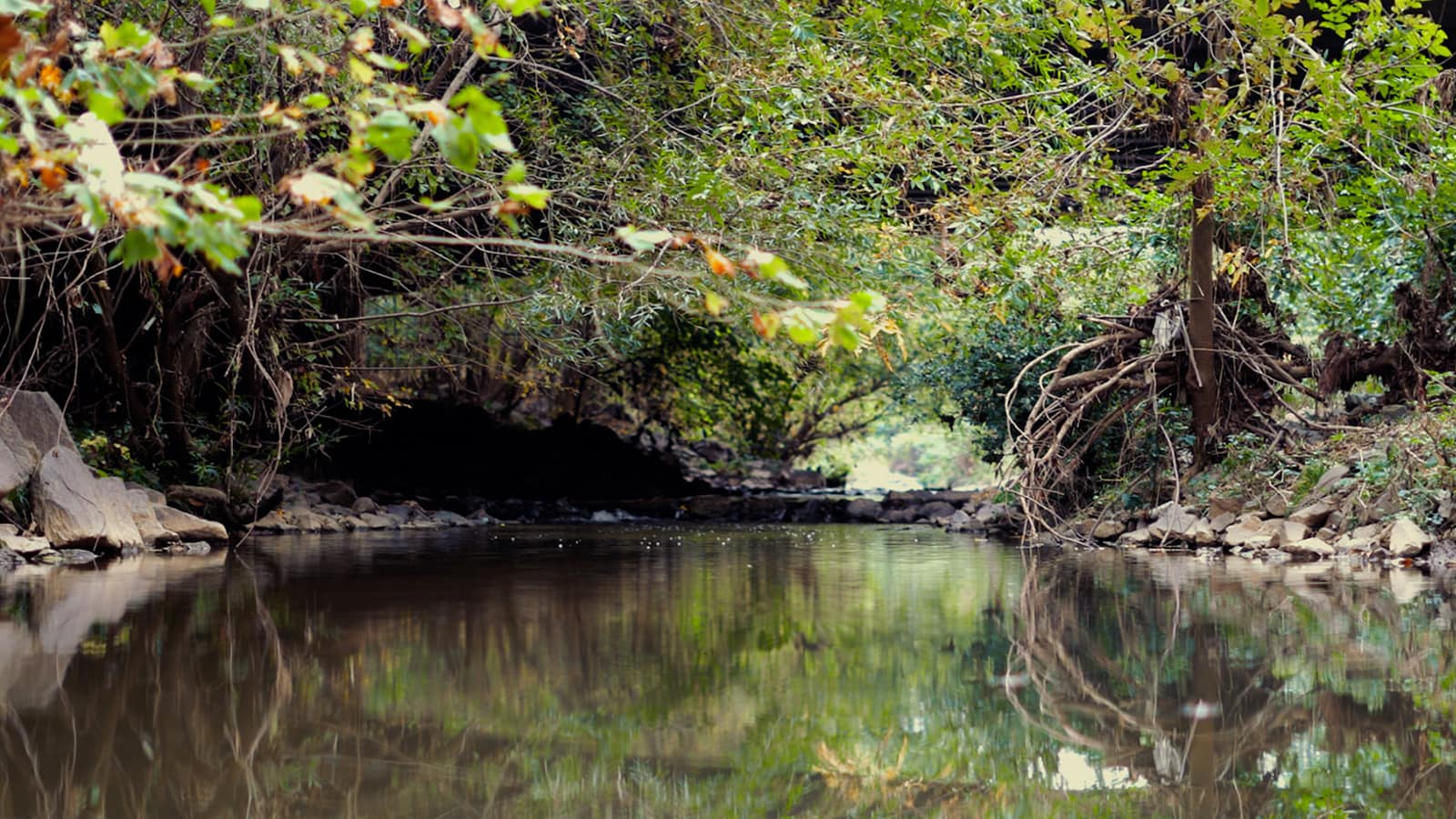
HIDDEN HISTORY
A Look at the Storied Past of Little Sugar Creek Greenway and its Rise in Community Value
Eyesore No More
This once rejected creek that divided the city now connects the greater community and has inspired larger efforts of connecting all of Mecklenburg County with its greenways.
For years, Little Sugar Creek was an overlooked, heavily polluted stream running through the heart of Charlotte. It was decided that hiding the creek was the best way to utilize the land, so a massive concrete cap was placed over the creek in midtown and there it sat, hidden for decades. In the 1990’s, Mecklenburg County decided to embrace the challenge of cleaning up the creek by restoring it to be a true natural asset for the community.
LandDesign worked with the County to craft a new vision for what the Little Sugar Creek Greenway could become–a thriving community destination that improved urban quality of life while increasing surrounding property value. “Charlotte’s waterfront” is a model for urban stream restoration and placemaking, demonstrating how a greenway can bring cultural, social, economic, and ecological value together.
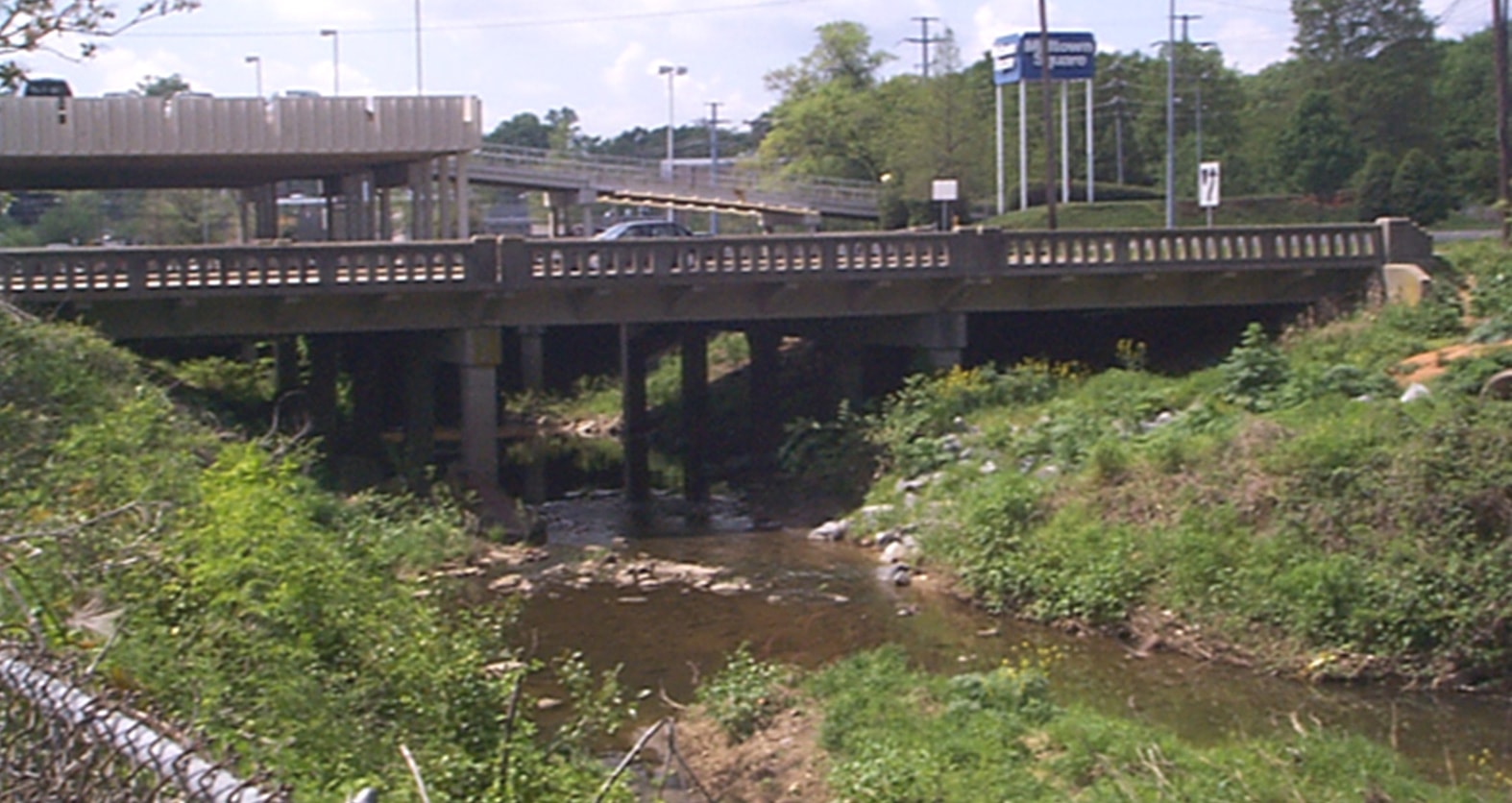
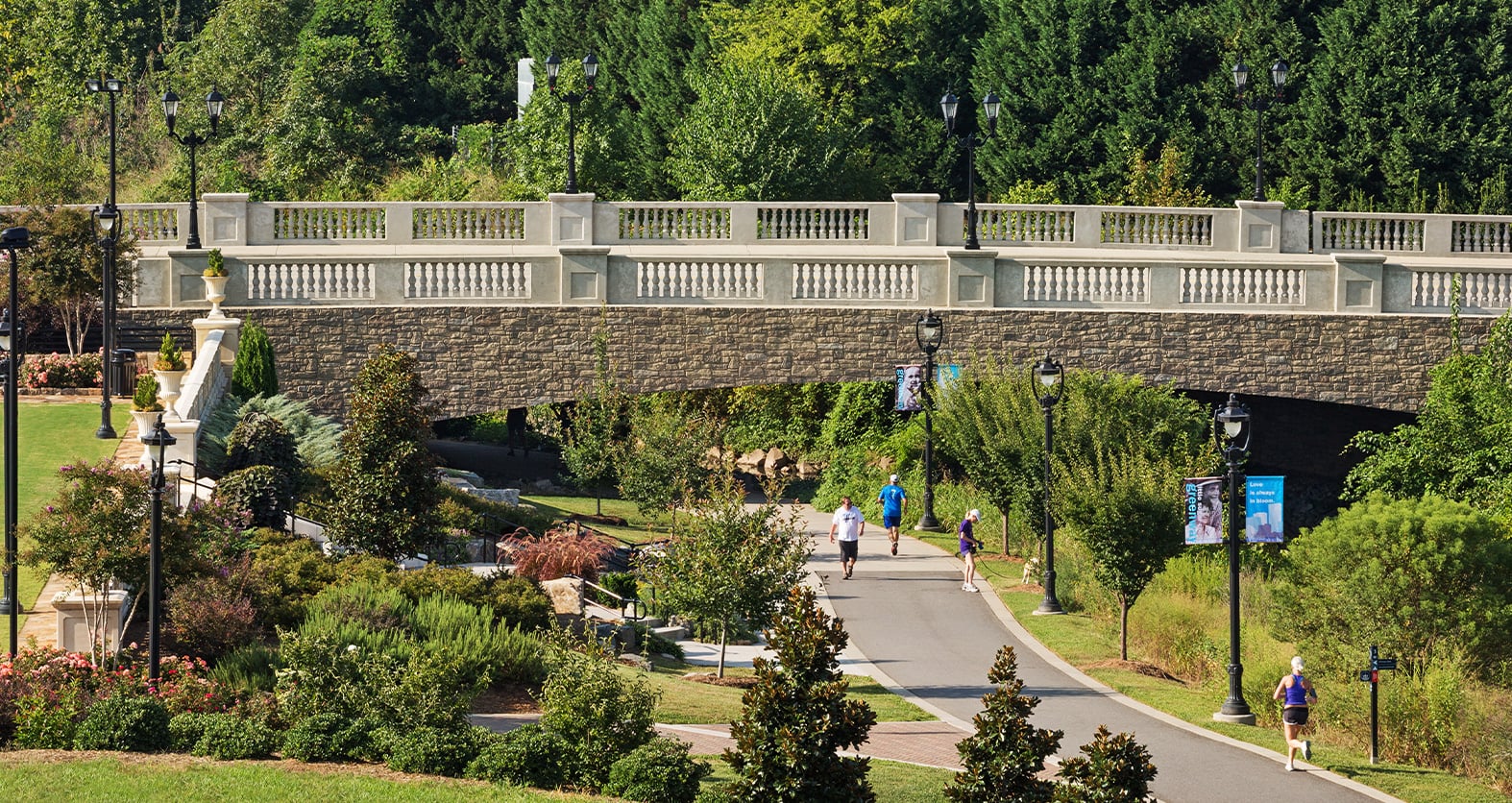
For decades, Little Sugar Creek was a polluted, dangerous eyesore weaving through urban, suburban and rural areas of Charlotte. Mecklenburg County and LandDesign worked together to uncover the value hidden within the creek.
Little Sugar Creek Greenway is 800-acre corridor that knits together neighborhoods, parks, civic uses, schools and open space, used by thousands each month as an urban oasis of recreation. Nearby retail and residential development has grown significantly on the waterfront creating picturesque views in high demand.
This once rejected creek that divided the city now connects the greater community, and has inspired larger efforts of connecting all of Mecklenburg County with greenways.
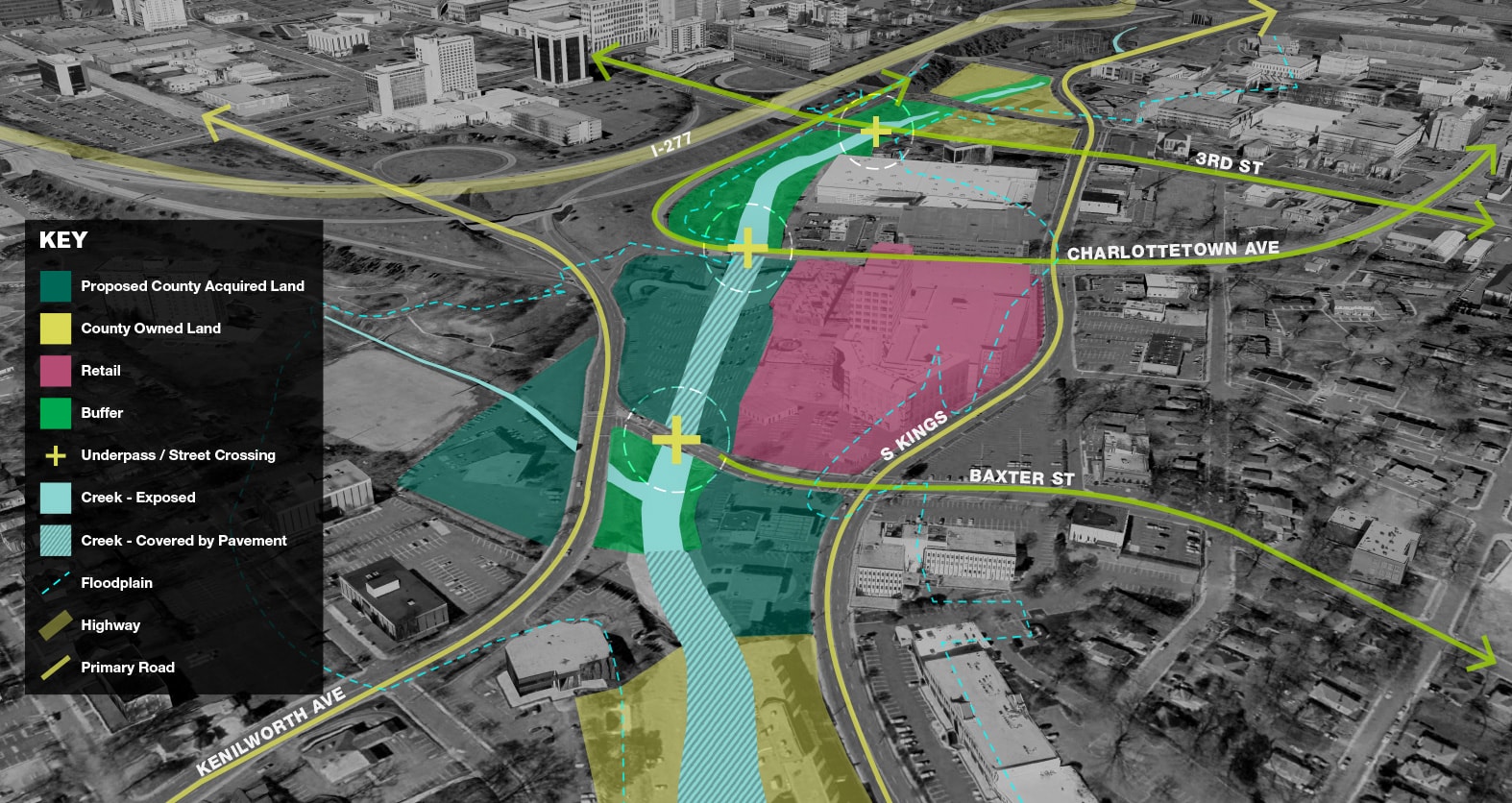
Any bold vision has obstacles. Weaving green infrastructure through a highly developed urban area definitely had its share: property acquisition, relocation of businesses, designing for floods, and adjacency to a freeway, to name a few. From a purely ecological standpoint, the creek needed to be returned to health, and the community had to be convinced it could be an asset instead of an eyesore.
YOU CAN TELL THE WHOLE HISTORY OF MECKLENBURG COUNTY JUST BY FOLLOWING THE CREEK.
— BETH POOVEY, DIRECTOR OF GREENWAYS, PARKS + OPEN SPACE


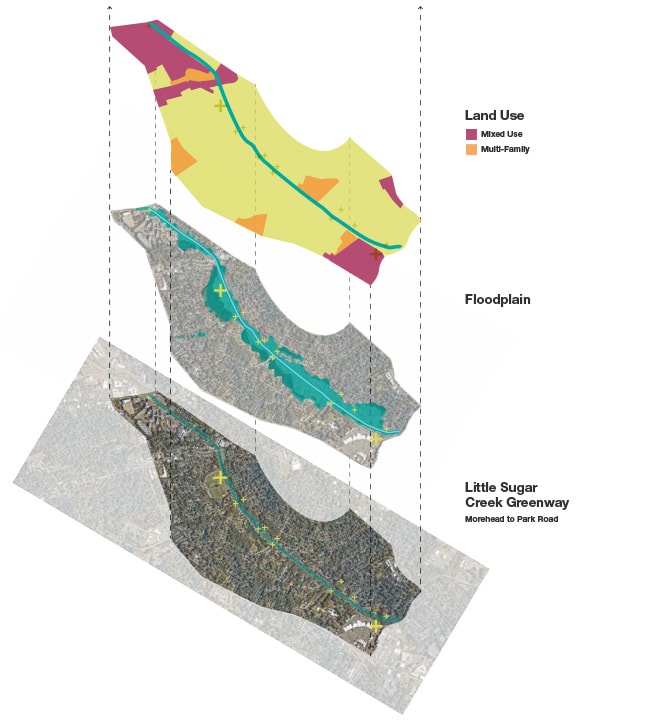
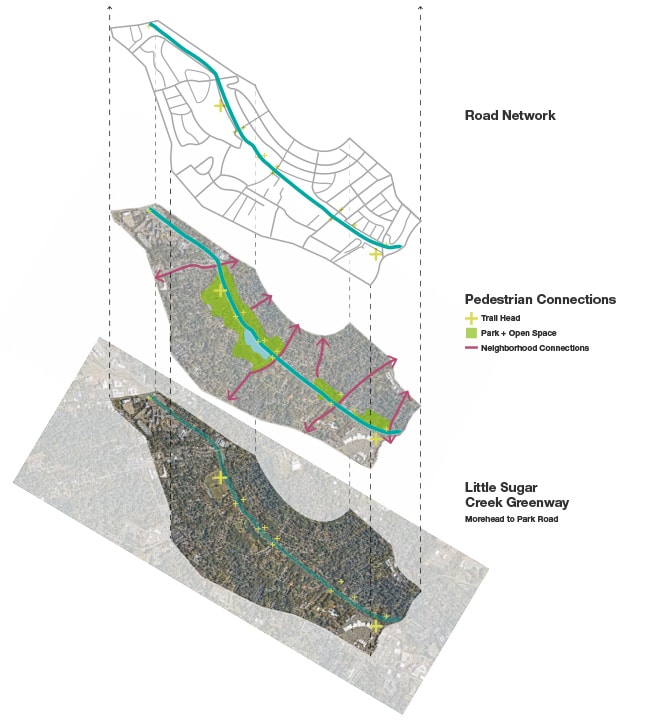
Physical
The stream itself was in rough shape, and needed to be cleaned up and restored to health.
Functional
Designing for flood plains, navigating through existing urban setting to increase surrounding property values in the long term.
Social
Turn the community’s perception to a positive one. Did multiple community open meetings, historical research and neighborhood studies to be sure the greenway reflected the neighborhoods it knit together.

Physical
The stream itself was in rough shape, and needed to be cleaned up and restored to health.

Functional
Designing for flood plains, navigating through existing urban setting to increase surrounding property values in the long term.

Social
Turn the community’s perception to a positive one. Did multiple community open meetings, historical research and neighborhood studies to be sure the greenway reflected the neighborhoods it knit together.
Custom-Designed for the Community
With the public involvement process during the master planning phase, LandDesign held multiple stakeholder interviews and community open houses in different geographical locations along the corridor, and incorporated this feedback into the chosen alignment and master plan recommendations.
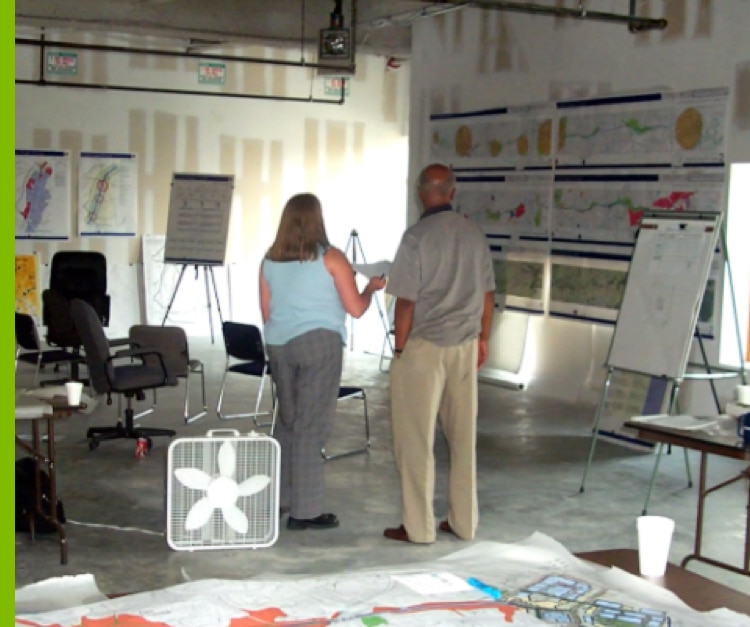
Diverse Palette of Materials
Each section of the greenway features a palette of materials and design elements that were carefully chosen to create a cohesive character that not only addresses the ecological systems, but also reflects the historic and urban vernacular.
LandDesign worked side by side with public and private developers to reverse the mindset of the creek as a ‘back-door,’ so that new developments would orient to the greenway.
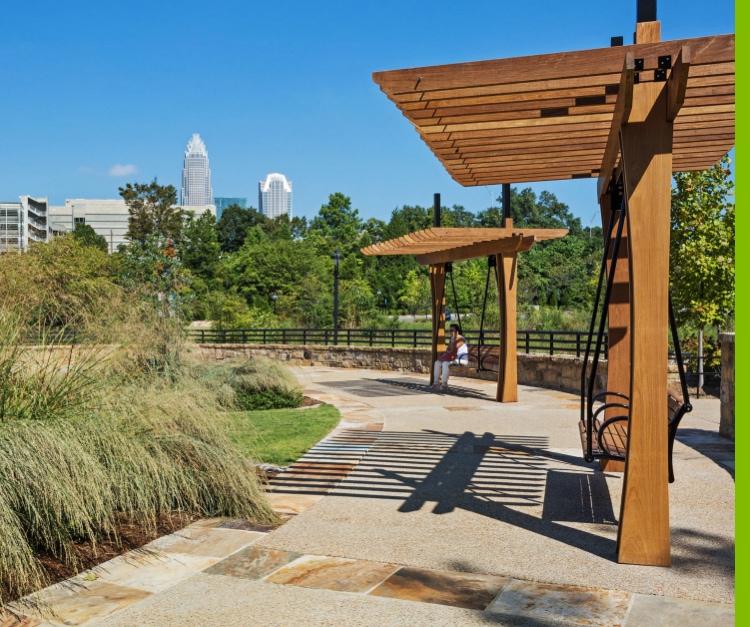
Uncovering the Creek
In 2002 the concrete cap was removed and stream enhancements began. With the replanting of native plant life and the creek’s banks restored, wildlife began to return and the community finally embraced the beauty of the natural environment.
-
5180
LF of Stream Restored
-
2000
LF of Stream Uncovered
-
500
New Trees Planted
-
70%
Reduction in Impervious Area
-
21
Thriving Fish Species
-
4
Storm-Water Rain Gardens
Public Safety as a Design Feature
By uncapping the creek and implementing design interventions, the water quality of Little Sugar Creek has improved. However, it remains an urbanized creek which carries many pollutants from upstream urban run-off. We created a design that celebrates water, but provides impediments to keep people out of the creek.
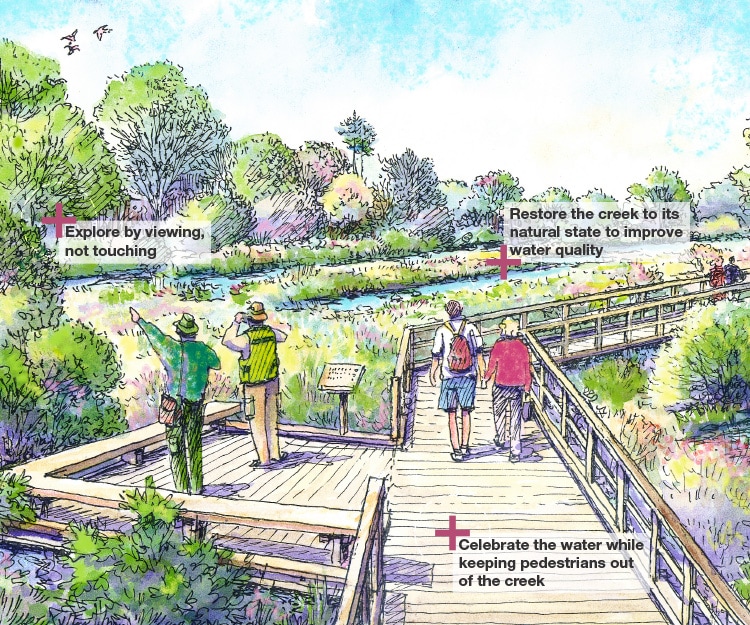
Embracing the Flood
A pivotal challenge also related to designing within the floodplain was providing safe pedestrian passage. The stream corridor can rise 6 feet within 15 minutes under the right conditions, and there are five road crossings within this section of the greenway.
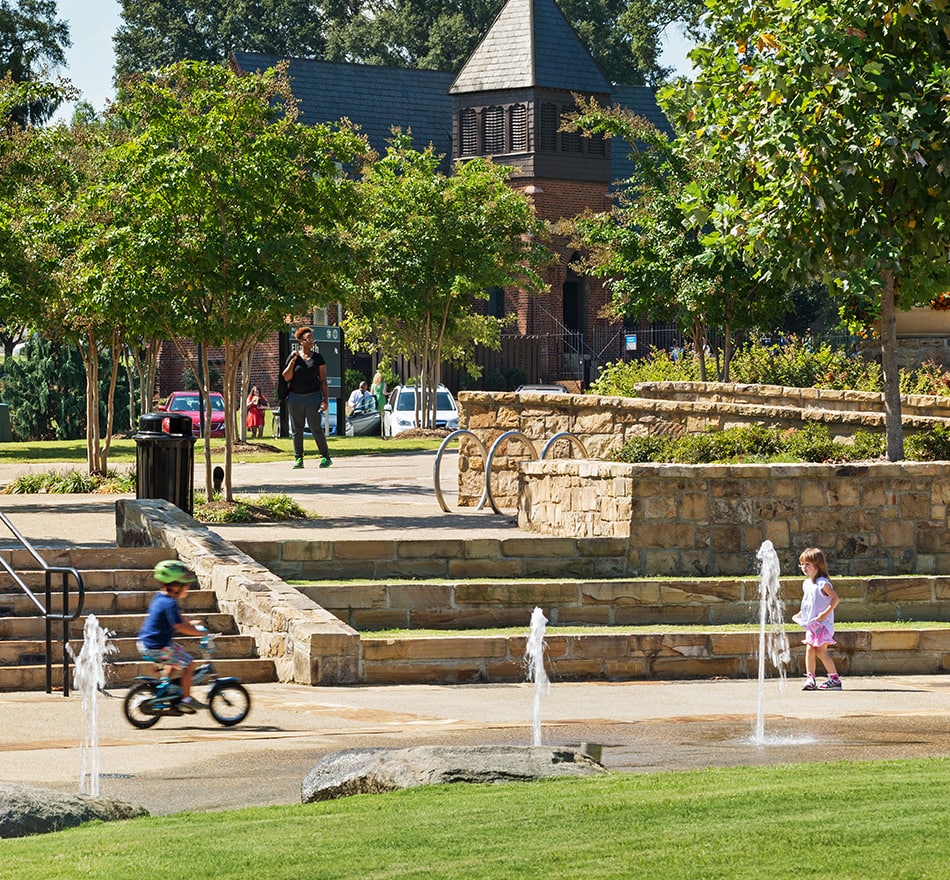
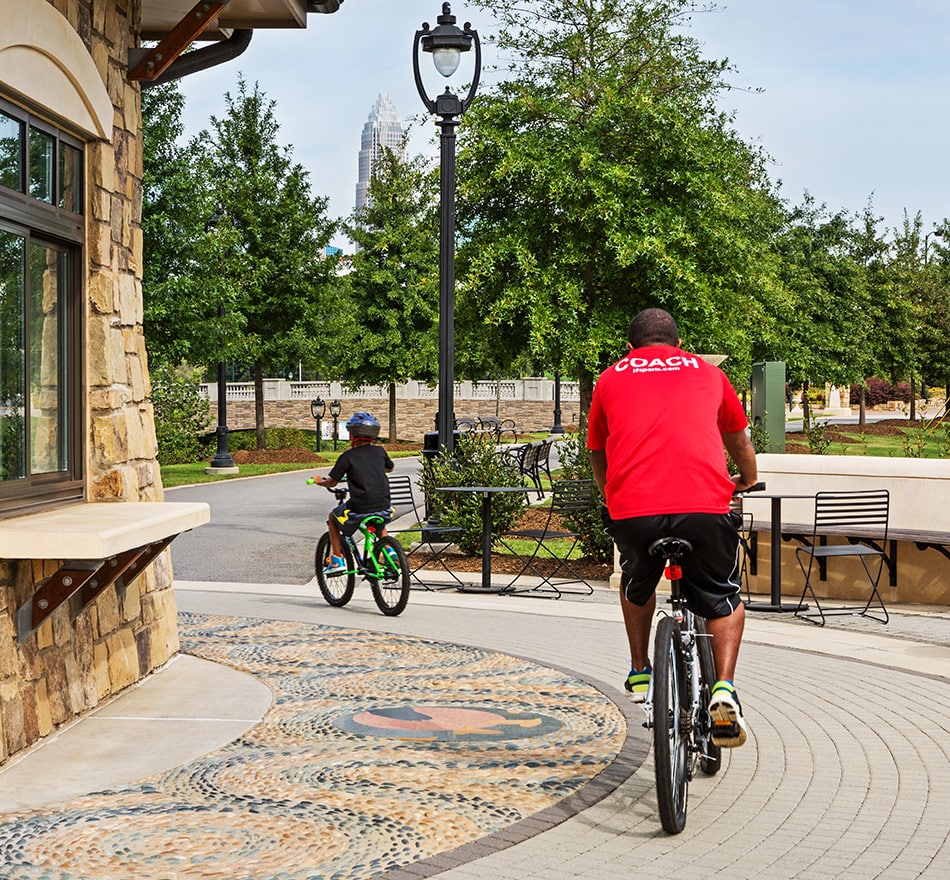
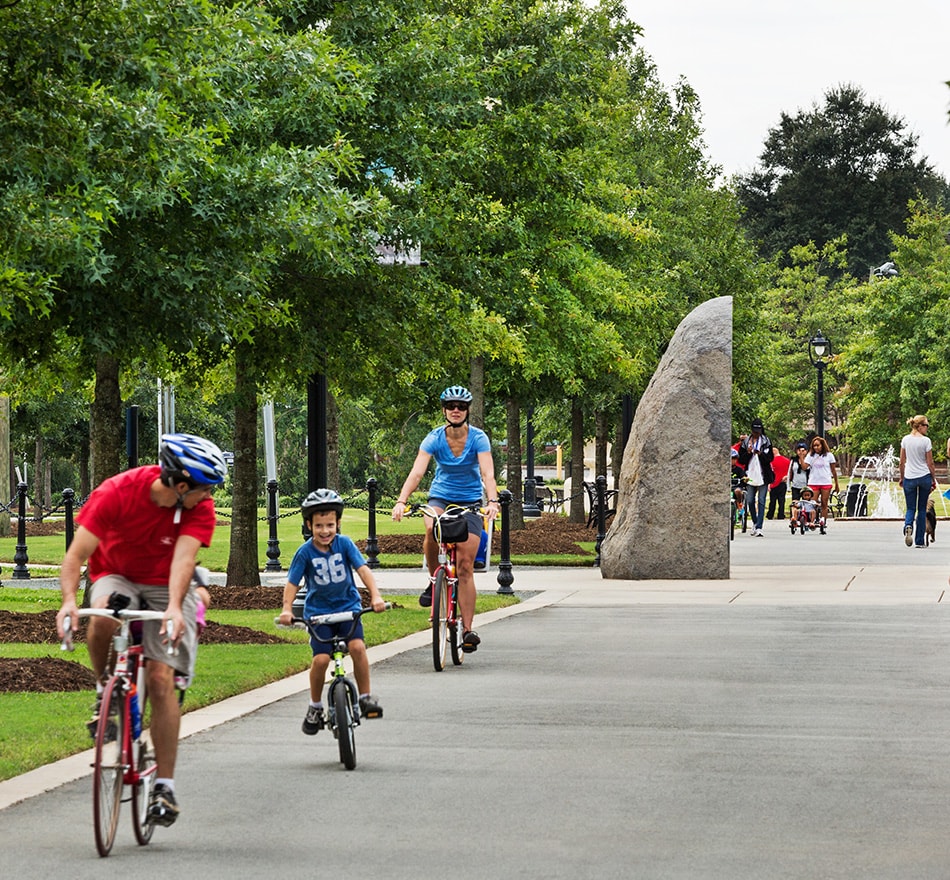
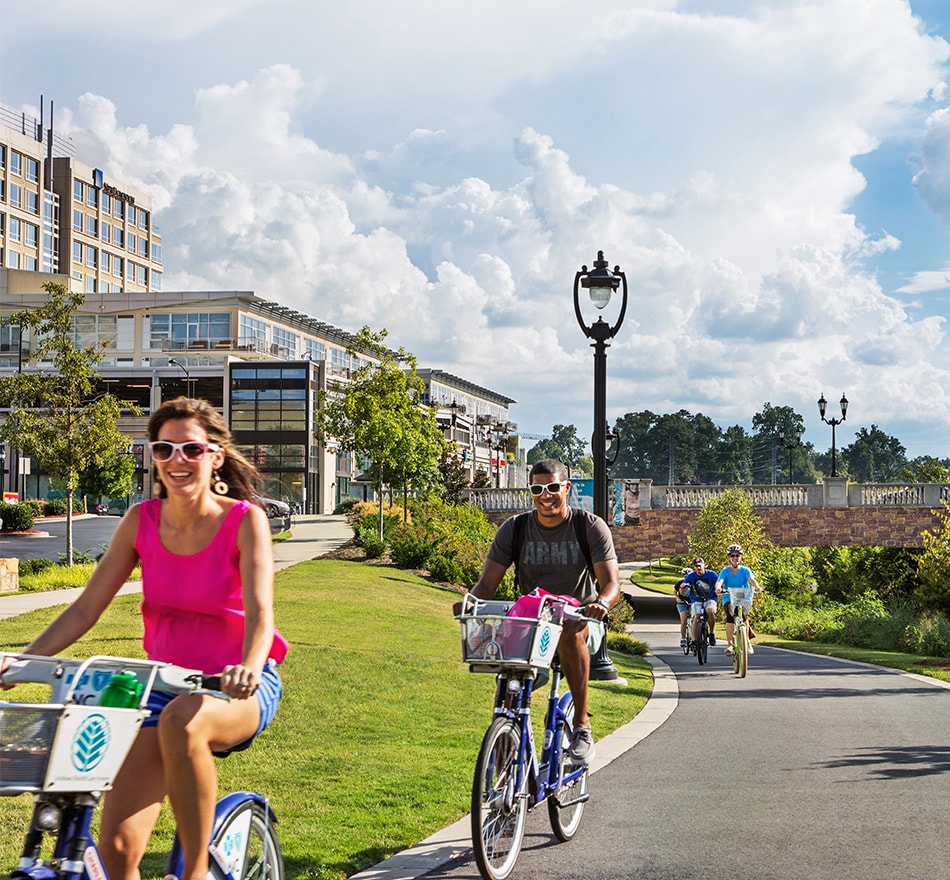
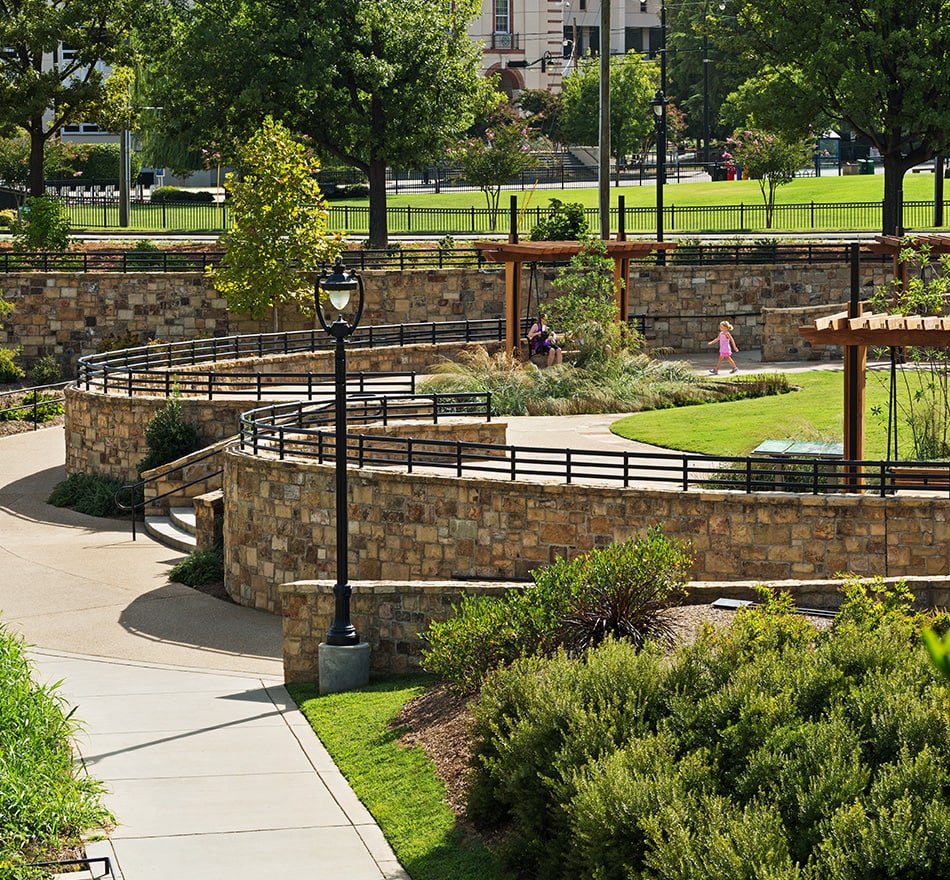
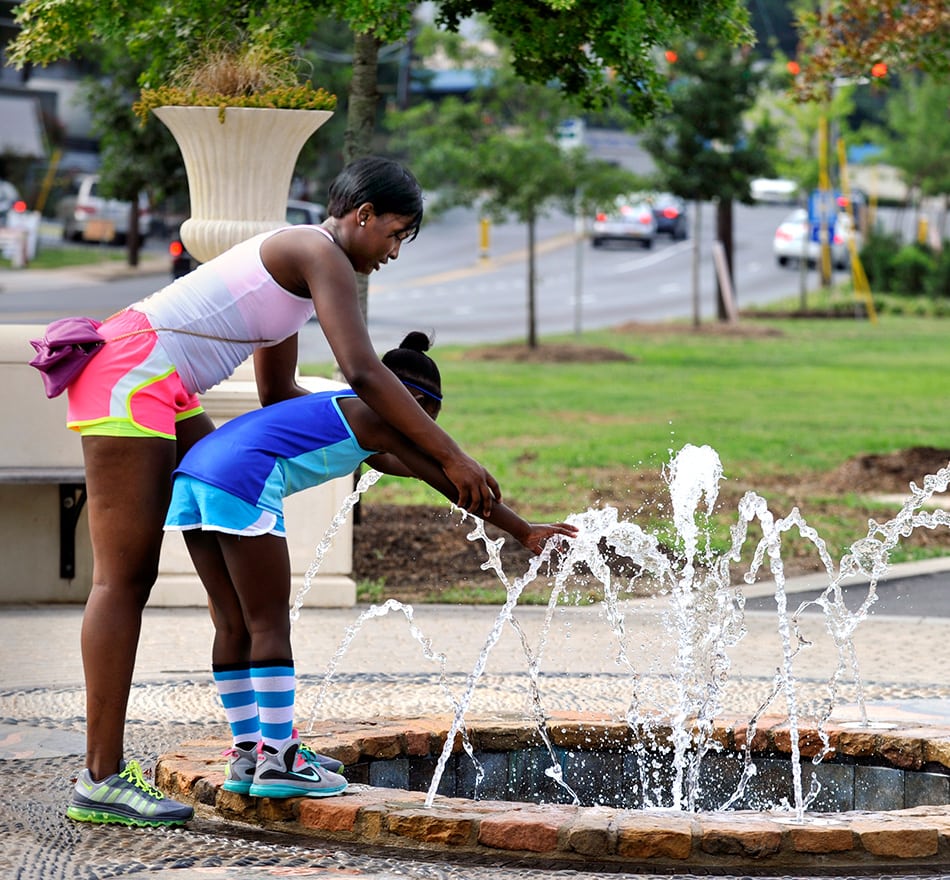
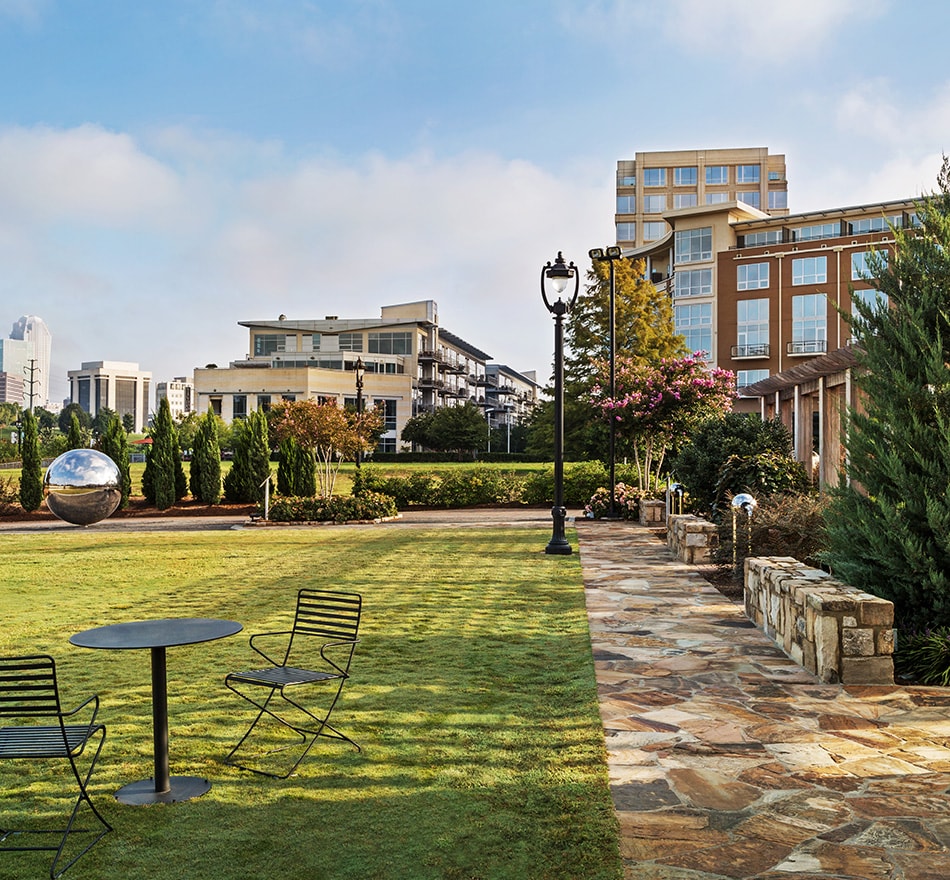
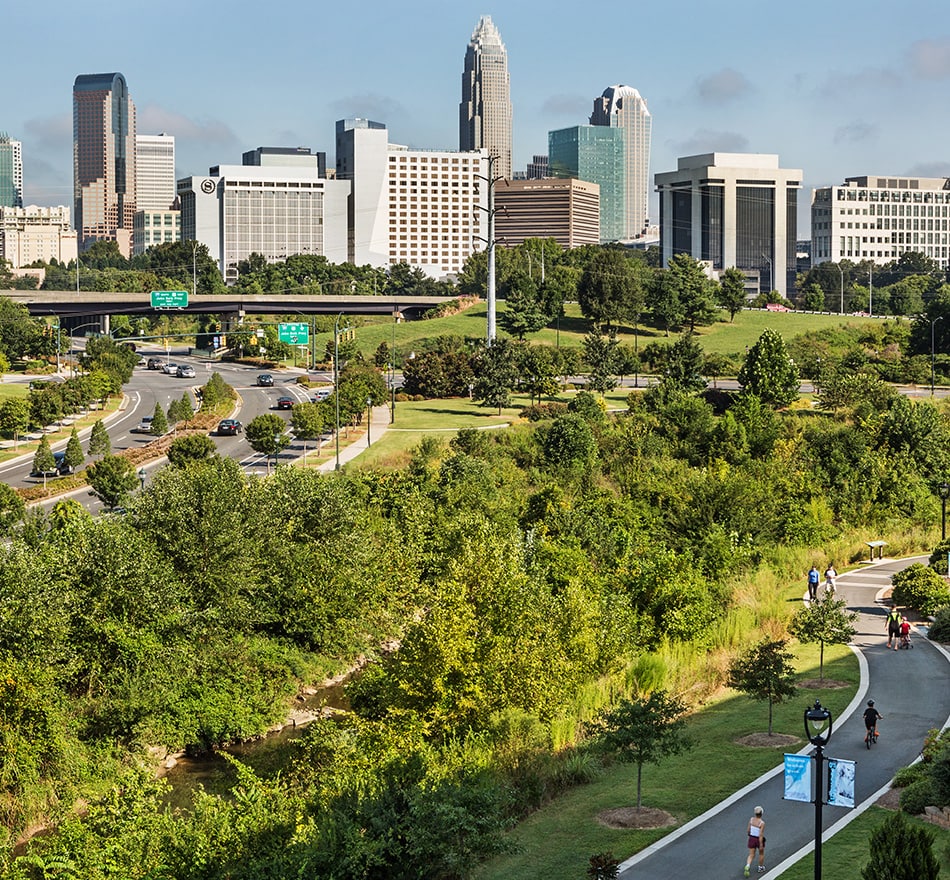
Working with NCDOT
The design team worked closely with NCDOT engineers through design and engineering to provide grade-separated crossings and craft a cross section that met NCDOT approval, and provided appropriate trail width and height without causing a rise in the hydraulic model.
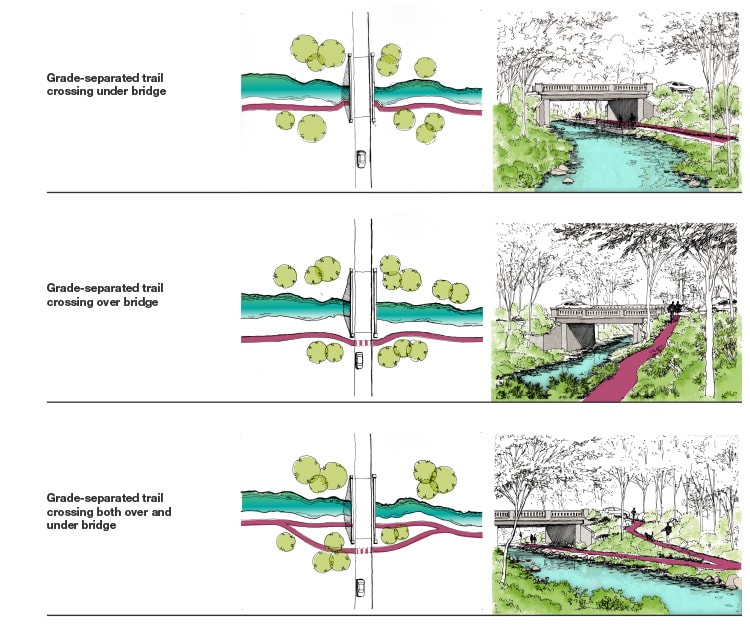
Public-Private Partnerships
While the partnership with The Metropolitan developer was instrumental in the design for LSCG, a number of other private-public partnerships were collectively needed to make this a success.
-
9
Funding Partners
-
12+
Contributing Private and Public Organizations
-
per $1
of public investment spurred $6 of private investment
Once a Liability, Now an Asset
A polluted river once seen as a nuisance has been restored to health, and the 0.5-mile linear park alongside it has brought strong economic return for the surrounding community.
